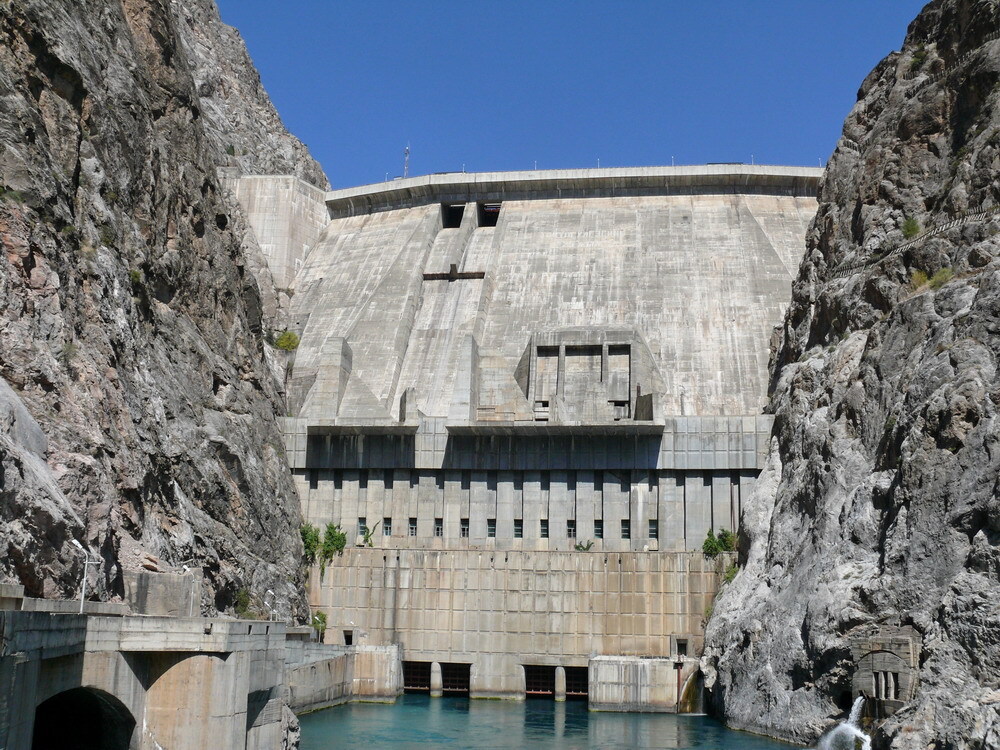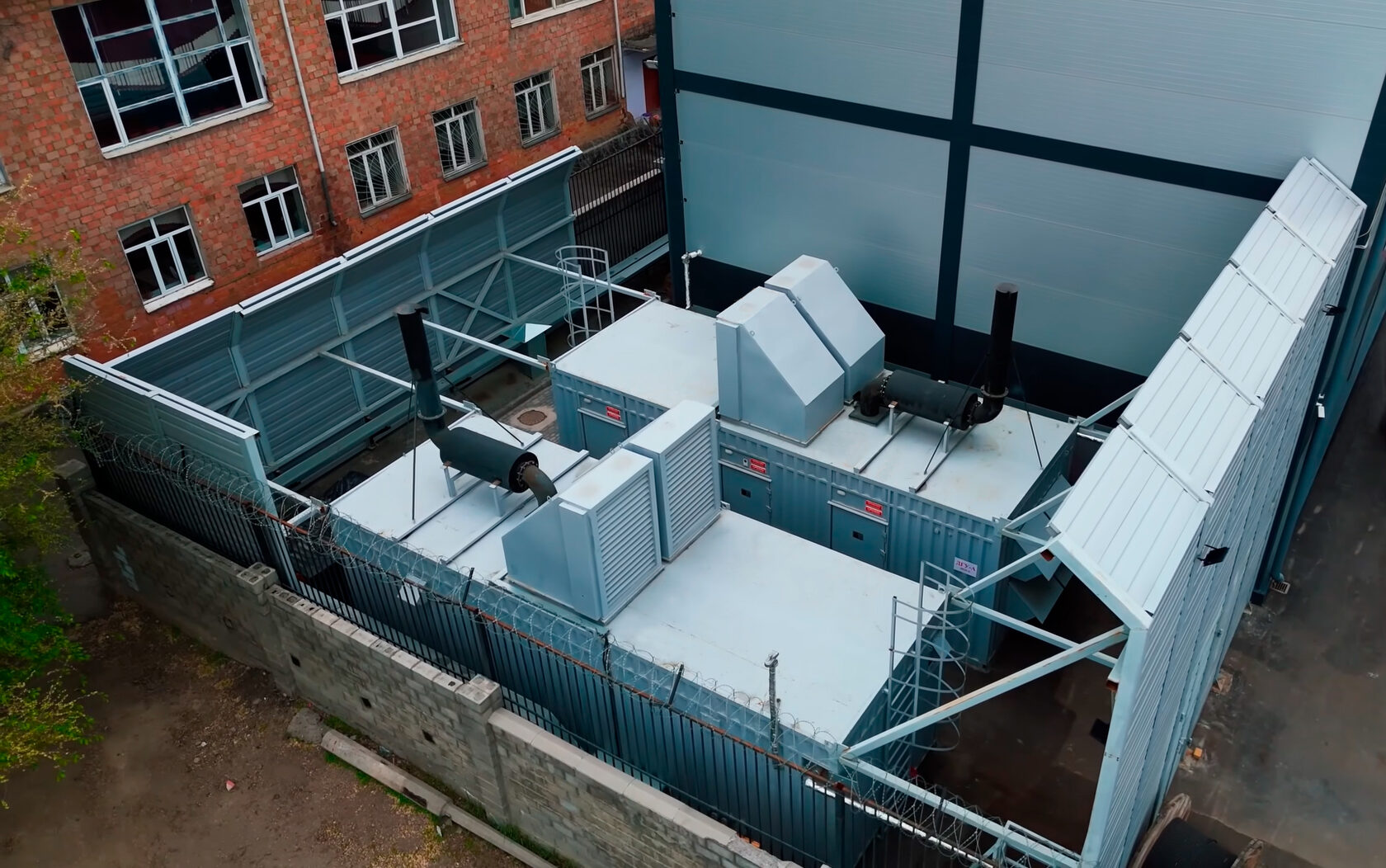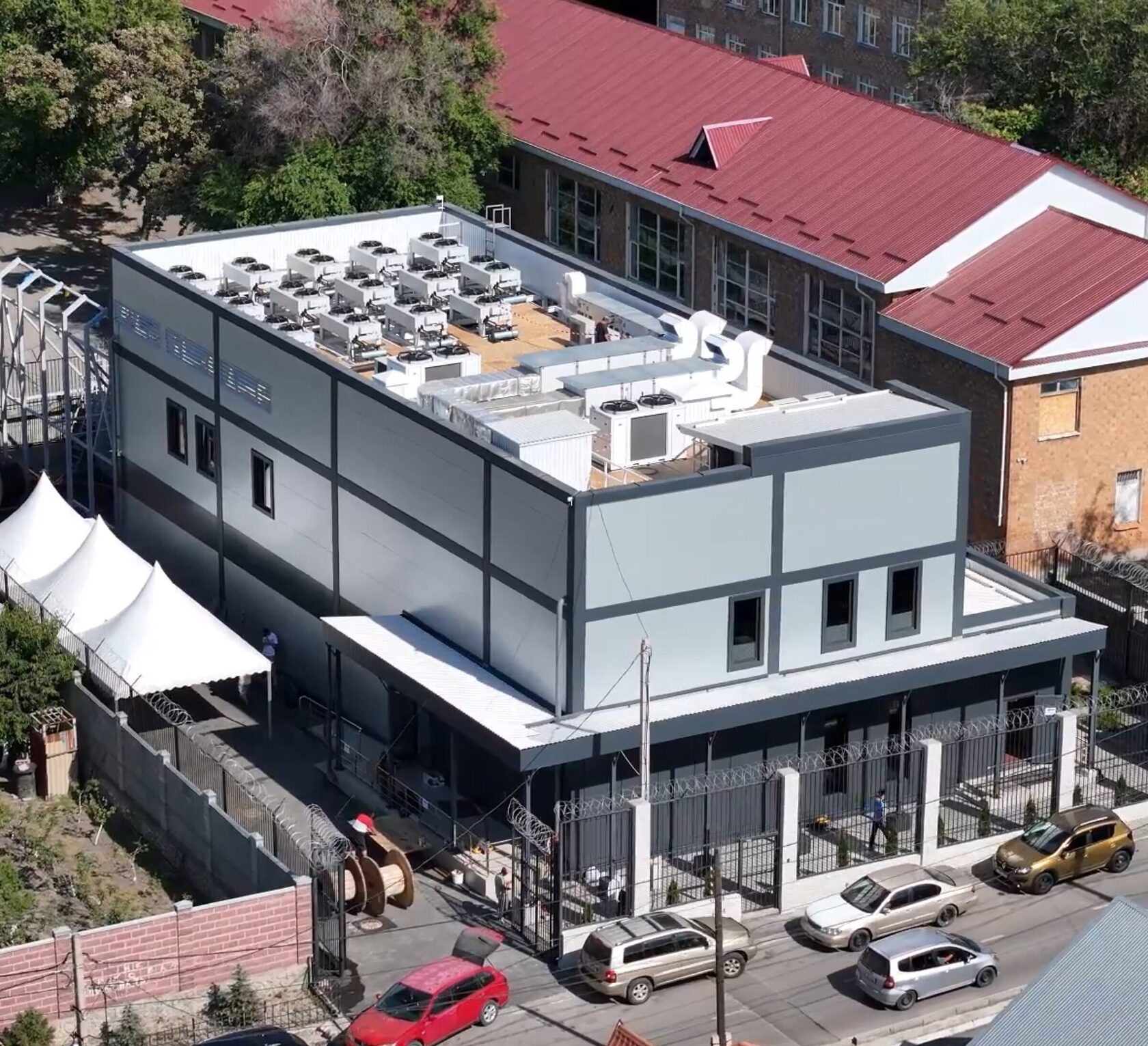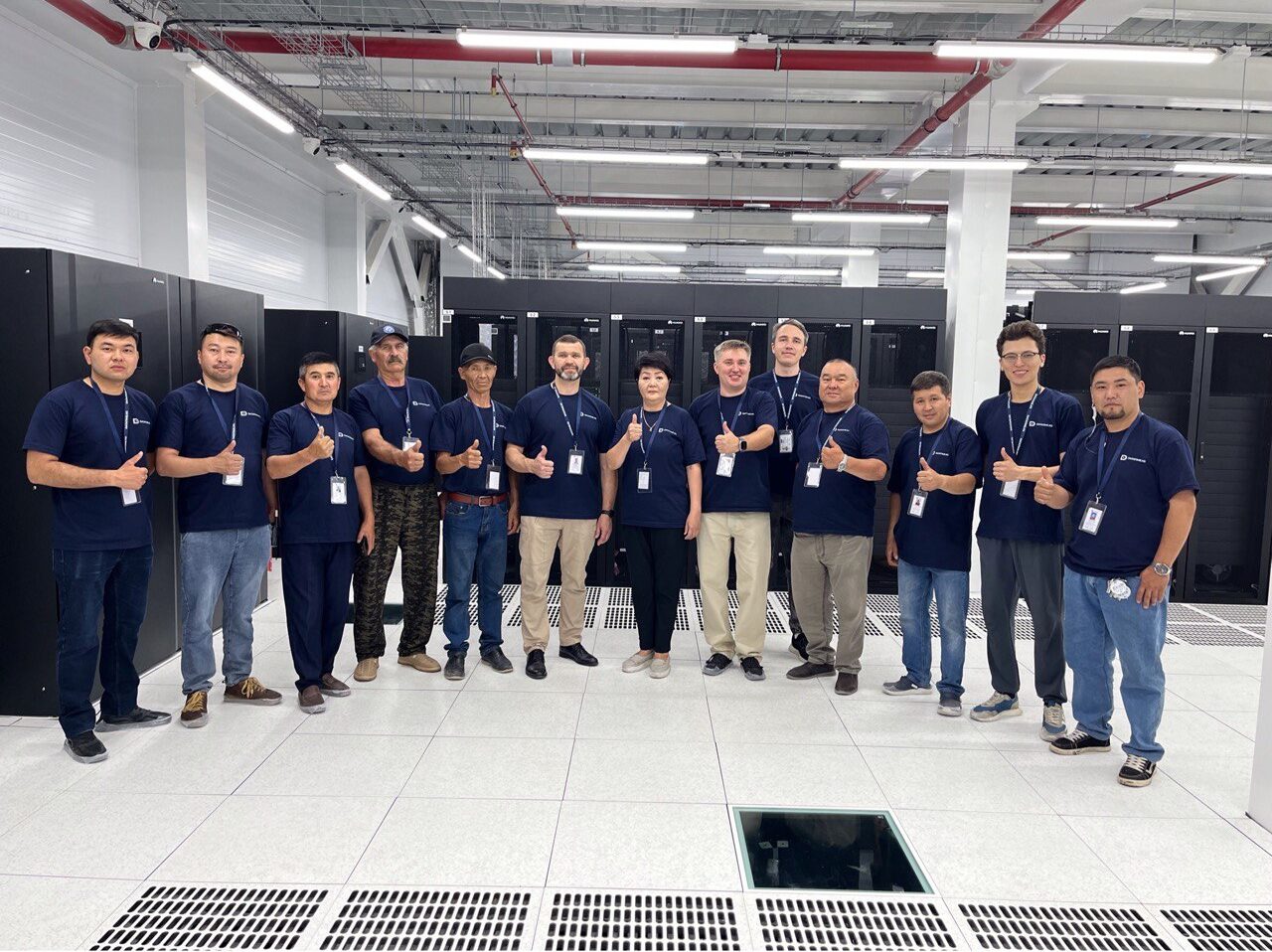
From a Steppe Nomad to a Digital One: How to Access the Internet Through a Yurt’s Window
A yurt — the iconic circular tent of Central Asian nomads — and the Internet may seem like complete opposites. One stands for tradition and mobility, the other for connectivity and data. At first glance, they share no common ground — but in Kyrgyzstan, they are closer than you might expect. And while the link between them may seem elusive, we’ll try to trace it.
Tucked away at the crossroads of ancient caravan routes, Kyrgyzstan lies between four powerful neighbors: China, Kazakhstan, Uzbekistan, and Tajikistan. Its area spans nearly 200,000 square kilometers — that’s two Portugals or one U.S. state of South Dakota.
Kyrgyzstan is home to kind-hearted, responsive, and hospitable people, and the stunning nature of the Tian Shan mountains and the mild climate of the foothills attract tourists from around the world.
The national flag features a red banner with a golden sun disc in the center. Inside the solar disc is a circle with intersecting lines—the Tunduk, the dome of a yurt — the traditional nomadic dwelling.
Made traditionally from the wood of the Archi tree, the Tunduk consists of a round rim with two intersecting curved beams within it. It serves as both the main upper support structure of the yurt, forming its dome, and as an opening for ventilation, lighting, and smoke escape from the stove. In bad weather, the opening is covered with a felt flap called Örmök.
Kyrgyzstan is home to kind-hearted, responsive, and hospitable people, and the stunning nature of the Tian Shan mountains and the mild climate of the foothills attract tourists from around the world.
The national flag features a red banner with a golden sun disc in the center. Inside the solar disc is a circle with intersecting lines—the Tunduk, the dome of a yurt — the traditional nomadic dwelling.
Made traditionally from the wood of the Archi tree, the Tunduk consists of a round rim with two intersecting curved beams within it. It serves as both the main upper support structure of the yurt, forming its dome, and as an opening for ventilation, lighting, and smoke escape from the stove. In bad weather, the opening is covered with a felt flap called Örmök.

" She, the keeper of the hearth, tugged gently at the rope — the white felt of the Örmök slid quietly over the dome, alternately unveiling the sky or wrapping the fire in silence. In that simple motion lay the whole rhythm of nomadic life: a balance between openness to the world and the protection of one's shelter."(from the notes of an ethnographer)
In modern Kyrgyzstan, the word “Tunduk” has been given to a mobile app and digital IT platform — a national digital ecosystem that unites government services, marketplaces, education, and cultural content.
With the launch of the Tunduk app, citizens and businesses gained the ability to request certificates, pay fees and fines, apply for document replacement and registration, execute property and business transactions, and even apply for state mortgages — all online.
Popular among the population are also banking apps, mobile and e-commerce marketplaces, taxi and delivery services. Restaurants are switching to digital menus and online order systems. And all of this runs on domestically hosted digital resources.
It’s hard to believe that while all this unfolds in the cities, just dozens of kilometers away, shepherds are herding sheep and cattle, moving on horseback and living in yurts, while on specially hedged grounds they conduct games of "Kok-Boru," something between equestrian polo and rugby, using the carcass of a goat instead of a ball.
With the launch of the Tunduk app, citizens and businesses gained the ability to request certificates, pay fees and fines, apply for document replacement and registration, execute property and business transactions, and even apply for state mortgages — all online.
Popular among the population are also banking apps, mobile and e-commerce marketplaces, taxi and delivery services. Restaurants are switching to digital menus and online order systems. And all of this runs on domestically hosted digital resources.
It’s hard to believe that while all this unfolds in the cities, just dozens of kilometers away, shepherds are herding sheep and cattle, moving on horseback and living in yurts, while on specially hedged grounds they conduct games of "Kok-Boru," something between equestrian polo and rugby, using the carcass of a goat instead of a ball.

It’s hard to believe that while all this unfolds in the cities, just dozens of kilometers away, shepherds are herding sheep and cattle, moving on horseback and living in yurts, while on specially hedged grounds they conduct games of "Kok-Boru," something between equestrian polo and rugby, using the carcass of a goat instead of a ball.
Even there, digitalization has arrived: all livestock in commercial farming is microchipped, and buyers at the market can verify the animal’s vaccinations, age, and grazing history. Livestreams of Kok-Boru matches have become a familiar part of life.
No, the Kyrgyz are not world leaders in digitalization. They are more like fast followers — but their pace of digital growth is among the highest in the world.
To understand the pace and specifics of the country’s development, let’s provide a brief historical overview.
Even there, digitalization has arrived: all livestock in commercial farming is microchipped, and buyers at the market can verify the animal’s vaccinations, age, and grazing history. Livestreams of Kok-Boru matches have become a familiar part of life.
No, the Kyrgyz are not world leaders in digitalization. They are more like fast followers — but their pace of digital growth is among the highest in the world.
To understand the pace and specifics of the country’s development, let’s provide a brief historical overview.
A Brief History of Kyrgyzstan: From Nomadic Tribes to an Engineering Legacy

After gaining independence in 1991 (followed with renaming its capital to Bishkek) Kyrgyzstan experienced a deep economic crisis. Enterprises shut down, the population began emigrating en masse, and political instability — marked by revolutions in 2005, 2010, and 2020 — delayed the country’s digital modernization.
Yet despite these challenges, the Soviet-era engineering legacy — energy, irrigation, roads, and education — remains a solid foundation that the country continues to rely on today.
During the challenging years of independence, society was not focused on the development of digital technologies.
However, among noteworthy achievements was the introduction of one of the first national currencies in the post-Soviet space, the Kyrgyz Som, in 1993.
The construction of digital infrastructure based on reliable data centers began with the National Bank of the Kyrgyz Republic.
In 2015, with the support of the Schneider Electric brand, a small commercial data center for 60 racks was launched.
In 2019, the National Bank of the Kyrgyz Republic's data center was certified as Uptime Tier III and put into operation.
Yet despite these challenges, the Soviet-era engineering legacy — energy, irrigation, roads, and education — remains a solid foundation that the country continues to rely on today.
During the challenging years of independence, society was not focused on the development of digital technologies.
However, among noteworthy achievements was the introduction of one of the first national currencies in the post-Soviet space, the Kyrgyz Som, in 1993.
The construction of digital infrastructure based on reliable data centers began with the National Bank of the Kyrgyz Republic.
In 2015, with the support of the Schneider Electric brand, a small commercial data center for 60 racks was launched.
In 2019, the National Bank of the Kyrgyz Republic's data center was certified as Uptime Tier III and put into operation.
The Datatime Project: Building the First Commercial Tier III Data Center
Datatime entered the Kyrgyz market in 2023 with the goal of establishing the country’s first commercial Tier III data center. It should be noted that the team already had experience in implementing commercial and corporate data centers of various capacities from small to extremely large beyond the borders of the Kyrgyz Republic.
Starting from a compact concept — a 500 kW, 100-rack standalone facility in Bishkek — the team set out to bring the project to life.
The first challenges emerged during the search for a suitable site. Without delving into legal specifics — which were many, given the fluid regulatory environment — the key criteria included proximity to the city center, access to high-voltage substations (at least 1,000 kW), the ability to deploy independent fiber channels, and compliance with fire and environmental safety requirements for diesel generator installation.
Local grid operators were categorically unwilling to apply a commercial electricity tariff for consumers approved for 1,000 kW capacity and 6 kV high-voltage connections. Datatime was treated as an industrial customer — similar to a metallurgy plant — and subject to elevated tariffs, threatening the viability of the business model. However, with the support of local authorities and the Russian Kyrgyz Development Fund, the team succeeded in securing access to the appropriate commercial tariff.
Design presented another set of challenges. There were no local firms experienced in Tier III data center design, so the Datatime team, supported by international partners and engineering resources from Huawei — a global leader in UPS, cooling, and telecom infrastructure — took on the task internally.
The full design and approval cycle took approximately five months. To accelerate construction, the team divided approvals into two stages: structural and foundation permits for the main building, followed by MEP infrastructure approvals.
During the design phase, the team encountered several location-specific issues:
The structure needed to withstand magnitude 9 earthquakes, which significantly increased steel requirements and overall project cost.
Bishkek’s geography — enclosed by mountain ranges and located in a natural basin — combined with widespread coal-based heating in winter, results in persistent smog and airborne coal dust during periods of low wind. As a result, free cooling was excluded from the design. The fresh air system for staff was equipped with dual filtration and air conditioning, implemented with 2N redundancy.
Harsh seasonal and daily temperature fluctuations — from –27°C to +45°C, and daily swings of over 20°C in spring and fall — required specific technical adaptations:
Starting from a compact concept — a 500 kW, 100-rack standalone facility in Bishkek — the team set out to bring the project to life.
The first challenges emerged during the search for a suitable site. Without delving into legal specifics — which were many, given the fluid regulatory environment — the key criteria included proximity to the city center, access to high-voltage substations (at least 1,000 kW), the ability to deploy independent fiber channels, and compliance with fire and environmental safety requirements for diesel generator installation.
Local grid operators were categorically unwilling to apply a commercial electricity tariff for consumers approved for 1,000 kW capacity and 6 kV high-voltage connections. Datatime was treated as an industrial customer — similar to a metallurgy plant — and subject to elevated tariffs, threatening the viability of the business model. However, with the support of local authorities and the Russian Kyrgyz Development Fund, the team succeeded in securing access to the appropriate commercial tariff.
Design presented another set of challenges. There were no local firms experienced in Tier III data center design, so the Datatime team, supported by international partners and engineering resources from Huawei — a global leader in UPS, cooling, and telecom infrastructure — took on the task internally.
The full design and approval cycle took approximately five months. To accelerate construction, the team divided approvals into two stages: structural and foundation permits for the main building, followed by MEP infrastructure approvals.
During the design phase, the team encountered several location-specific issues:
The structure needed to withstand magnitude 9 earthquakes, which significantly increased steel requirements and overall project cost.
Bishkek’s geography — enclosed by mountain ranges and located in a natural basin — combined with widespread coal-based heating in winter, results in persistent smog and airborne coal dust during periods of low wind. As a result, free cooling was excluded from the design. The fresh air system for staff was equipped with dual filtration and air conditioning, implemented with 2N redundancy.
Harsh seasonal and daily temperature fluctuations — from –27°C to +45°C, and daily swings of over 20°C in spring and fall — required specific technical adaptations:
- Avoiding soft membrane roofing to prevent cracking
- Enclosing all MEP infrastructure in UV- and temperature-resistant casings
- Using white-painted roofing and external equipment to reduce solar gain and maintain optimal operating conditions for cooling systems

Construction also brought difficulties. Local contractors were engaged for general construction but lacked experience in data center-grade infrastructure. The Datatime team stepped in directly — donning hard hats, organizing procurement, implementing HSE protocols, and taking full control over construction quality.
For the installation and commissioning of UPS, cooling, and gas suppression systems, trusted international contractors were brought in.
Testing the diesel generators and UPS systems required a resistive load module. The nearest 500 kW load bank was in Kazakhstan — but quick, cost-effective, and risk-free cross-border shipment was not possible, and the schedule was under threat. The team explored options: renting resistors from old trolleybus depots or even building makeshift resistor arrays using asbestos tubing and metal wire. The latter was immediately rejected for fire risk. As for the trolleybus idea — it turned out that Bishkek’s entire trolley fleet had been retired and relocated to Osh and Naryn in 2024, as the mayor’s office had switched fully to buses.
For the installation and commissioning of UPS, cooling, and gas suppression systems, trusted international contractors were brought in.
Testing the diesel generators and UPS systems required a resistive load module. The nearest 500 kW load bank was in Kazakhstan — but quick, cost-effective, and risk-free cross-border shipment was not possible, and the schedule was under threat. The team explored options: renting resistors from old trolleybus depots or even building makeshift resistor arrays using asbestos tubing and metal wire. The latter was immediately rejected for fire risk. As for the trolleybus idea — it turned out that Bishkek’s entire trolley fleet had been retired and relocated to Osh and Naryn in 2024, as the mayor’s office had switched fully to buses.

Eventually, the team purchased 150 personal home used space heaters rated at 3.5–4 kW each. These were installed directly in the server hall to simulate a full load. After a two-week delay, the heaters arrived — and testing resumed.
The Launch and Development of the Data Center

The data center was officially launched in June 2024.
The Datatime team, responsible for all technical and engineering support during construction, became the core of the facility’s technical operations service. Simultaneously, the company organized a training trip for its specialists to an operational Tier III data center — one previously built in 2021 with the involvement of Datatime’s leadership team.
While the technical foundation was solid, commercial development proved to be more difficult.
The data center was operational, but demand was still weak. The local market was not yet accustomed to paying a premium for reliability. A price of $150–200 per kW seemed high for many local B2B clients. Most banks and financial institutions either ran their own small server rooms or hosted their infrastructure abroad.
The first wave of clients came from neighboring Kazakhstan, where colocation in commercial data centers was more common. Compared to prices in Almaty and Astana, Datatime’s rates were seen as competitive — and the facility met international standards.
Momentum shifted significantly when the National Bank of the Kyrgyz Republic (NBKR) introduced a new regulation requiring all banks and financial institutions to place server infrastructure for processing within the territory of the Republic. This legislative change created immediate traction — and Kyrgyz clients began actively exploring local colocation options.
Datatime signed a partnership agreement with a local hosting provider to relocate their physical servers into the new facility and to offer rental infrastructure to downstream clients. The company also launched services for virtual server infrastructure and regional cloud resources, creating additional revenue streams and service depth.
In the months that followed, large and mid-sized banks, payment processing companies, and retail operators began signing colocation contracts. As of today, Datatime serves more than 40 main clients, with stable monthly demand — including growing interest in GPU-powered servers for AI-related workloads.
The Datatime team, responsible for all technical and engineering support during construction, became the core of the facility’s technical operations service. Simultaneously, the company organized a training trip for its specialists to an operational Tier III data center — one previously built in 2021 with the involvement of Datatime’s leadership team.
While the technical foundation was solid, commercial development proved to be more difficult.
The data center was operational, but demand was still weak. The local market was not yet accustomed to paying a premium for reliability. A price of $150–200 per kW seemed high for many local B2B clients. Most banks and financial institutions either ran their own small server rooms or hosted their infrastructure abroad.
The first wave of clients came from neighboring Kazakhstan, where colocation in commercial data centers was more common. Compared to prices in Almaty and Astana, Datatime’s rates were seen as competitive — and the facility met international standards.
Momentum shifted significantly when the National Bank of the Kyrgyz Republic (NBKR) introduced a new regulation requiring all banks and financial institutions to place server infrastructure for processing within the territory of the Republic. This legislative change created immediate traction — and Kyrgyz clients began actively exploring local colocation options.
Datatime signed a partnership agreement with a local hosting provider to relocate their physical servers into the new facility and to offer rental infrastructure to downstream clients. The company also launched services for virtual server infrastructure and regional cloud resources, creating additional revenue streams and service depth.
In the months that followed, large and mid-sized banks, payment processing companies, and retail operators began signing colocation contracts. As of today, Datatime serves more than 40 main clients, with stable monthly demand — including growing interest in GPU-powered servers for AI-related workloads.

Potential and Prospects of Digitalization in Kyrgyzstan
Kyrgyzstan holds significant potential for the development of a robust digital economy, largely due to its geographic advantages and natural resources.
First, the country serves as a strategic node along transcontinental transport corridors that connect East and West. This positioning offers substantial logistical and digital infrastructure advantages for regional data flow and interconnection.
Second, Kyrgyzstan benefits from an abundance of renewable energy resources, including hydropower, solar, and wind. These clean energy sources are particularly well suited for power-intensive digital infrastructure, offering a pathway to low-carbon and sustainable data center operations.
Third, the country’s high-altitude geography — particularly regions around Lake Issyk-Kul at elevations of 1,800 meters and above — creates a favorable climate for infrastructure deployment. The naturally cool mountain air allows for highly efficient free cooling, reducing both energy consumption and operational costs.
With continued progress in digital transformation, Kyrgyzstan is well positioned to deliver high-speed internet and digital services even to its most remote areas.
As connectivity expands and infrastructure matures, the country has the opportunity to emerge not only as a destination for eco-tourism, but also as a competitive regional digital hub for Central Asia and beyond.
First, the country serves as a strategic node along transcontinental transport corridors that connect East and West. This positioning offers substantial logistical and digital infrastructure advantages for regional data flow and interconnection.
Second, Kyrgyzstan benefits from an abundance of renewable energy resources, including hydropower, solar, and wind. These clean energy sources are particularly well suited for power-intensive digital infrastructure, offering a pathway to low-carbon and sustainable data center operations.
Third, the country’s high-altitude geography — particularly regions around Lake Issyk-Kul at elevations of 1,800 meters and above — creates a favorable climate for infrastructure deployment. The naturally cool mountain air allows for highly efficient free cooling, reducing both energy consumption and operational costs.
With continued progress in digital transformation, Kyrgyzstan is well positioned to deliver high-speed internet and digital services even to its most remote areas.
As connectivity expands and infrastructure matures, the country has the opportunity to emerge not only as a destination for eco-tourism, but also as a competitive regional digital hub for Central Asia and beyond.
CEO Datatime
Pavel Treskunov